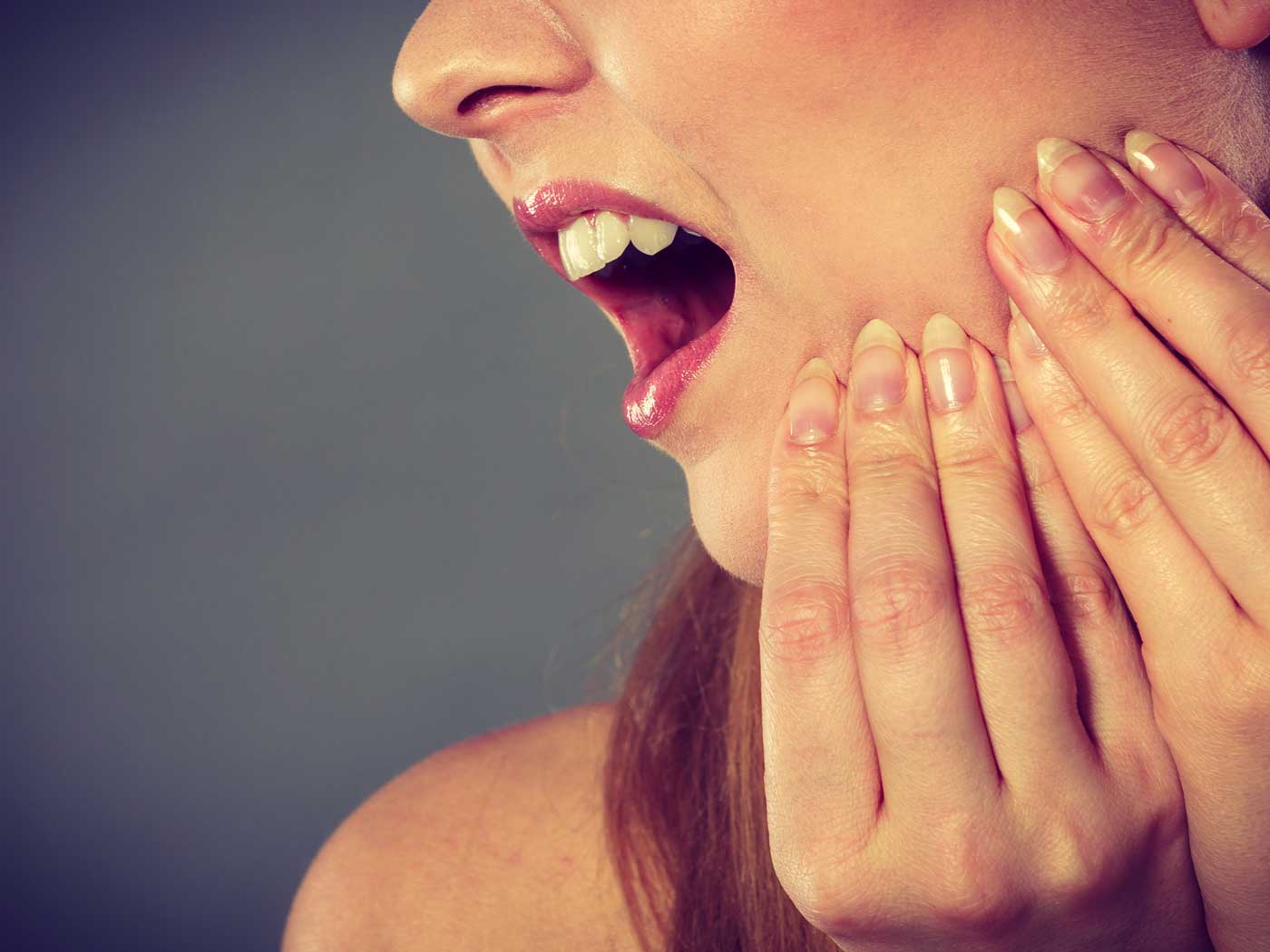A trip to Las Vegas changed my life. No, not because I hit it big at the poker table or won at roulette. It’s because I took a course that altered the trajectory of my practice. It showed me just how interconnected the mouth and jaw are with the rest of the body. Once I really grasped this concept, I saw how I could help my patients not just improve their teeth and their smile, but address bigger medical issues. Let me explain how.
Neuromuscular Pain
Symptoms of temporomandibular joint disorder (TMD), or disorder of the jaw joint, of course include jaw clicking, popping, and pain. But other very common symptoms include ringing in the ears, headaches, and pain in the neck, shoulders, and back. Why would that be? It’s clear to see how a disorder of the jaw joint would lead to jaw pain, but why neck and back pain?
It’s because of the way the body works. Let’s say someone clenches their jaw constantly and grinds their teeth at night time. The muscles in the jaw and nearby muscles in the neck and shoulders become tight and overworked. Nearby nerves can become stimulated, leading to facial pain, headaches, or ringing in the ear. This same scenario can happen when the jaw is misaligned. The body tries to compensate for the deficiency, leading to excessive use of certain muscles which can lead to pain.
Fixing the Pain
When the clenching and grinding are addressed or the misaligned jaw is fixed, these related symptoms disappear. Treatment depends on the nature of the problem. Sometimes, getting braces is the way to go, as this can fix problems with the bite that are causing pain. Other times, an oral appliance worn at night time is all that’s needed.
You can’t imagine the joy and gratitude patients have expressed when they finally discover a remedy for the pain that’s been plaguing them for a long time – sometimes years. Think of all the thousands, or perhaps millions, of people experiencing pain right now who don’t know that it’s stemming from their jaw! They may have spoken to a doctor about it, but until they talk to someone who understands the connection between the jaw and the rest of the body, they won’t be able to address the pain.
There’s a Name for It
What I’ve just described is physiological dentistry and the way physiological orthodontics can help fix these problems. It was the course I took in Las Vegas that opened my eyes to what I could do for my patients by going beyond the mouth and looking at health holistically to make even more meaningful, lasting changes to my patients’ health. I could treat misaligned jaws that cause chronic pain or address airway issues that can lead to bedwetting and ADHD in children and sleep apnea in adults. I could make a huge difference in the lives of my patients.
And that’s exactly what I have been doing along with my team at my practice. We give our all to make sure our patients receive the best holistic treatment and it begins by asking what’s going on with them, with their teeth and beyond. I worked and studied hard to get to this point in my practice, and now I feel very lucky that I’m able to do the work I do. All thanks to that one course in Vegas.
It’s an all-too-common experience: You take a sip of an ice-cold drink – ZOING! Or bite into an ice-cream sandwich – YEOW! You feel a sharp, searing pain go from your tooth straight to your brain. This is a telltale sign of tooth sensitivity and it’s a signal to you to do something about it.
What to know about sensitive teeth
I notice my patients come to me more often in the summertime complaining of tooth sensitivity than in other seasons, likely because they’re consuming more cold food and beverages in the hot weather. But why does cold cause this pain in the first place? And more importantly, what can be done about it?
You know that the tooth is covered with enamel, a coating of minerals that’s the hardest substance in the human body. Still, bad habits, tooth grinding, and normal wear and tear can crack or erode the enamel over time, exposing the surface underneath, the dentin layer. This dentin layer is highly sensitive. It’s comprised of tiny tubules leading to the pulp of the tooth, and when those tubules are exposed to cold, or heat, or even air, cells inside are stimulated that send a signal to the brain. This is one major cause of sensitive teeth.
Another big cause is receding gums. When the gums recede, due to periodontal disease, smoking, or a bad bite, they expose the dentin below the gums that – as you know – is very sensitive.
Tooth sensitivity is extremely common. Fortunately, there are things you can do to lessen the sensitivity and the pain.
- Use toothpaste for sensitive teeth. This is not just a marketing gimmick; these toothpastes are designed to block the tubules in the dentin so the cells aren’t triggered to cause pain.
- Avoid whitening toothpaste. Most contain ingredients that work by temporarily making the enamel more permeable, exposing the dentin underneath, which is exactly what you don’t want.
- If you grind your teeth, use a mouth guard. You want to stop the enamel eroding and making the problem worse.
- Consider orthodontic treatment to fix misaligned teeth if you notice gum recession, as this is the #1 cause of recession.
And of course, speak with your dentist about your symptoms and ask for advice.

 Dr. Ami Barakat
Dr. Ami Barakat